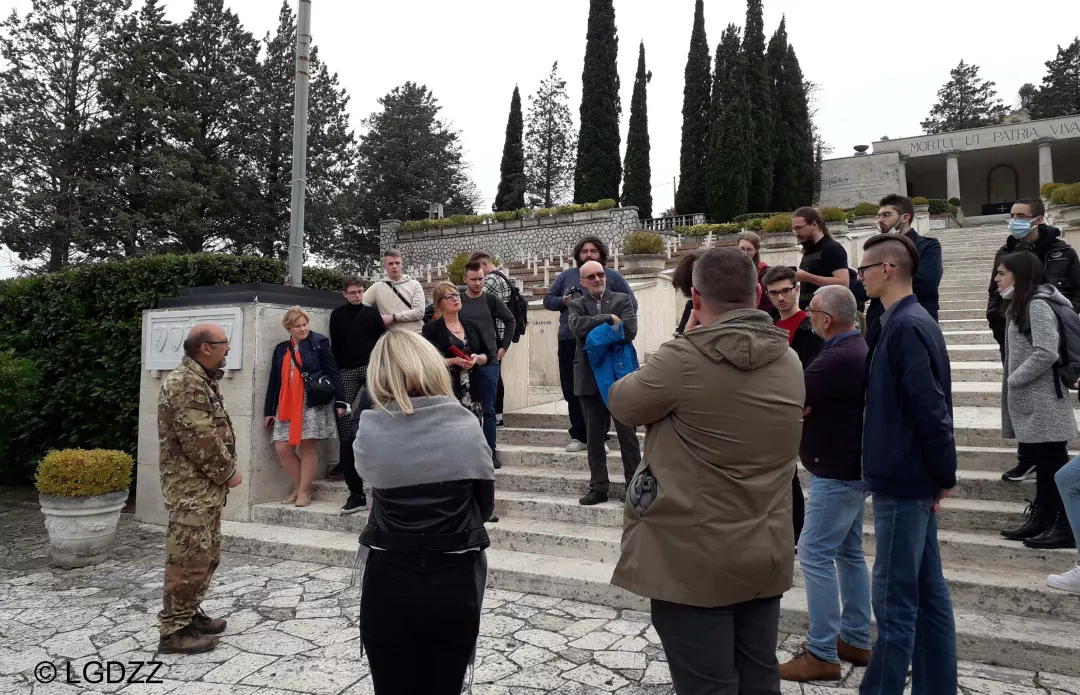General information
RDP Priority
- P6. Social inclusion and local development
RDP Focus Area
- 6B: Local development
RDP Measure
- M19: LEADER/CLLD
Summary
The ‘Anchor - Heritage for the Future’ project used a participatory social history approach to enable intergenerational connection across four LAG areas in two countries. Young people from four LAGs (three Polish and one Italian) were trained in social archiving techniques before setting out to interview local seniors. In addition to the filmed interviews, objects and images were collected to build a multimedia archive of stories from the WW2 generation: preserving their knowledge and memories for future generations.
Results
28 young people from four LAG areas received training in social archiving techniques, enabling four local communities to get to know each other's history.
The testimonies and memories of older people, which could have been irretrievably lost, have been preserved in the form of multimedia archives.

Promoter
Local Action Group Zalew Zegrzyński
Funding
Total budget - 167 500.00 (EUR)
EAFRD - 106 580.25 (EUR)
National/Regional - 60 919.75 (EUR)
Resources
Documents
ANCHOR project – Heritage for the Future
(PDF – 2.41 MB)
Links
Context
The head of the Zalew Zegrzyński Local Action Group (LAG) undertook an NRN-funded study trip to establish a partnership with the Alto Casertano LAG. Based near Monte Cassino in Italy, the area includes the site of an important WW2 battle site in which more than one thousand Polish soldiers lost their lives, and in parallel, the Zalew Zegrzyński LAG area hosts a commemorative memorial for Italian soldiers who were captured and deported following the World War II armistice between Italy and the Allied armed forces in 1943. This shared history seemed a promising basis for transnational cooperation between the two LAGs and an opportunity to raise awareness among young people in both areas regarding local history and heritage.
Objectives
The project aimed to aid social capital in rural areas by safeguarding opportunities provided by cultural heritage in the LAG territories to strengthen intergenerational bonds between young people and seniors.
Activities
Initially, a kick-off meeting (in Poland) allowed the four partner LAGs to meet and plan the project activities. Each LAG then recruited young people from their areas to gather historical information about their localities.
Two experts were recruited and trained young project participants in Poland on social archiving and filmmaking as well as supporting implementation of the project activities, such as conducting interviews with local people and compiling a multimedia archive of local history.
After conducting a series of pilot interviews, all participants reconvened in Italy for a second workshop where they looked at the work done so far and discussed how to improve the quality of their work.
The next step was to arrange and conduct the interviews before a post-production phase saw them transformed into a joint film. This has been screened at local promotional events, in memorial spaces and via the Internet.
Two summary conferences were organised, one in Poland and one in Italy, to celebrate the successful delivery of the project, gather the feedback of participants, and also to share some legacy outputs, including a training film on the subject of social archiving.
Main results
28 young people from four LAG areas received training in social archiving techniques, enabling four local communities to get to know each other's history.
Several dozen senior citizens gained a sense of appreciation and increased identification with young people, who themselves were given a leading role in the documentation of their area’s history by connecting with and recording the testimonies of older locals.
The testimonies and memories of older people, which could have been irretrievably lost, have been preserved in the form of multimedia archives.
Key lessons
The ANCHOR project is innovative because it brings a well-established methodology from the fields of social history and citizen science in cultural heritage, and applies it within the context of - and according to the strategic aims of the CAP.
